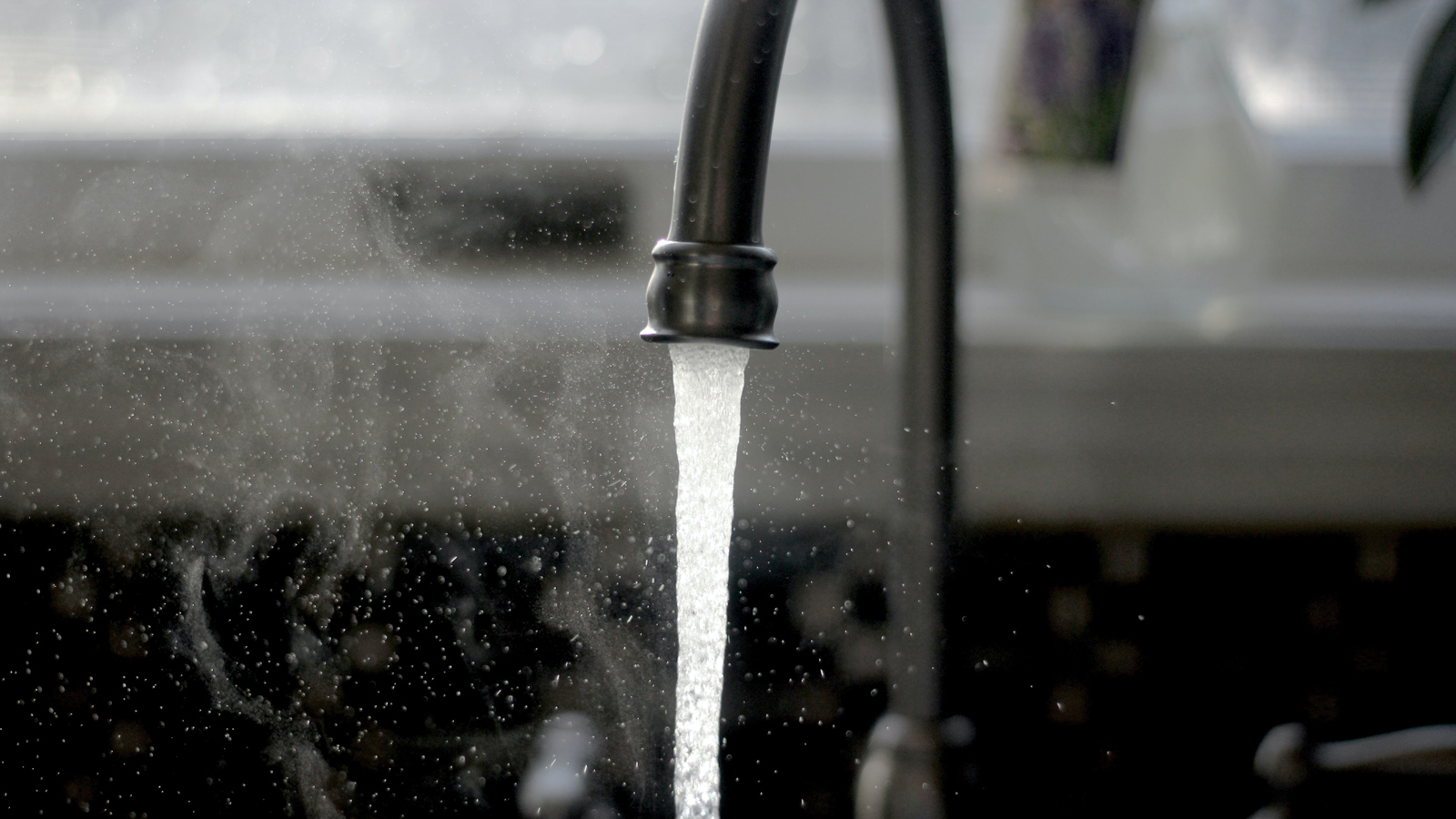
In the face of frequent droughts, communities in California are routinely ordered to conserve water as much as possible. But even well-intentioned residents have trouble pinpointing how much water they use over time — there are few, if any, tools to help make that calculation.
Flume, a startup founded by Cal Poly alumni, aims to bridge that knowledge gap and empower residents to reduce demand on dwindling water supplies. The company has developed monitoring hardware that easily straps to a home’s water meter, a Wi-Fi bridge that links the hardware to a home’s router, and a mobile app that displays real time data on what water is being used in ways that go far beyond the cryptic totals people see on their monthly bills.

The Flume system and app helps people see their water use more clearly. Courtesy of Flume.
“There’s such a lack of data around how people use water and what that means,” said James Fazio (Software Engineering ’16), Flume’s co-founder and chief technology officer. He estimates 14% of residential water usage is lost to waste. “You can’t manage what you can’t measure.”
The goal of Flume is simple: to eliminate water waste.
The Flume system uses machine learning to categorize indoor versus outdoor usage and even monitors the draw from different home appliances. The app helps users itemize their consumption — between laundry, showers or irrigation — and compare trends over time.
Within the first month, Fazio says more than 70% of Flume users catch a leak that needs repairing.
“I think [water is] something that a lot of us take for granted,” he said. “We wanted to provide a tool that was fun and allowed people to be part of the overall solution — almost like a community-oriented goal.”
Flume began in 2015, during a historic five-year drought that parched California. The student startup, boosted by the curriculum and support programs from the Center for Innovation and Entrepreneurship, was made up of a team of engineering students including co-founders Eric Adler (Mechanical Engineering ’16) and Jeff Hufford (Electrical Engineering ’15).
Adler first developed a concept for the system in a multidisciplinary engineering senior project course.
Adler, Fazio, Hufford and their team refined the Flume concept through the Innovation Quest competition, the HotHouse Summer Accelerator and the Incubator program. They credit the startup’s success to the early funding, mentorship, and supportive network of entrepreneurs the CIE provided.
“We were able to see if we were solving a big enough problem and this was going to be a viable business that we actually wanted to pursue full-time.”
The company, still headquartered in San Luis Obispo, has raised significant funding and now distributes its product in all 50 states, Canada and several other countries.

Flume’s cofounders Eric Adler (left) and James Fazio (right) stand with Los Angeles Mayor Eric Garcetti (center) to announce a new partnership. Image courtesy of Flume.
Most recently, Flume debuted a partnership with the Los Angeles Department of Water and Power to give homeowners the system for just $24 thanks to a rebate program. Fazio, Adler and Los Angeles Mayor Eric Garcetti announced the partnership in September on the front lawn of a Flume customer’s home in Van Nuys.
“As we’ve grown the company, the vision has expanded a little bit,” said Fazio. “Now we are not just at the individual level, but we’re providing help more at the utility, city, state and federal levels. We can actually spend time looking at ways that we can reduce the overall demand.”
He says Flume aggregates and anonymizes its data and shares it with utilities, which have been just as in the dark about how water is actually used at the residential level. The information can help water districts measure the success of conservation programs and plan outreach to residents during future stages of drought.
“The data’s extremely powerful, and I think that’s where we’re going to have a lot of success at making a true difference.”
Faculty are hard at work finding climate change through water. Read more in this issue.


